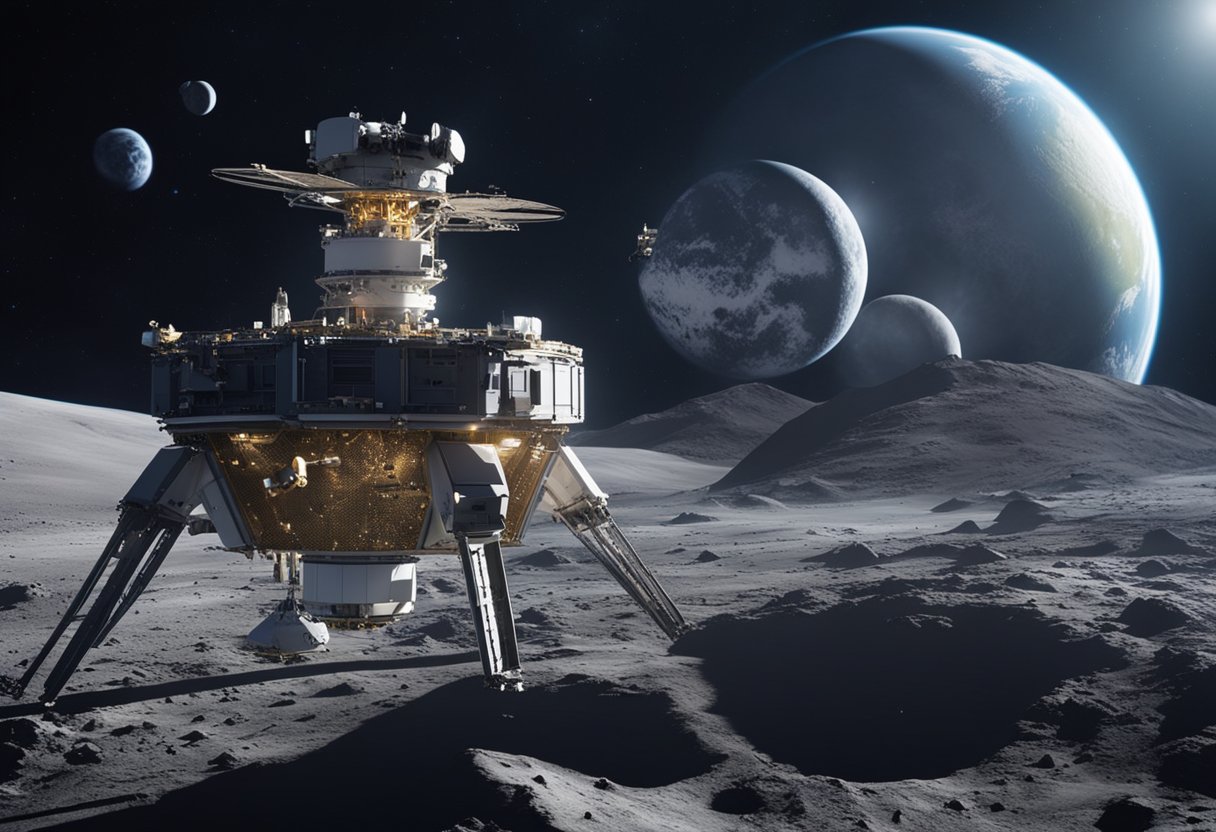
Earth science has been profoundly enriched by our ventures into space. As we’ve sent satellites and spacecraft to orbit our planet and probe the deeper reaches of our solar system, we’ve gained unique perspectives and valuable data. These missions enable us to monitor Earth’s climate, analyse environmental changes, and better understand the natural forces that shape our world. By peering down from the vantage point of space, we’ve developed technologies and methodologies that were once beyond imagination.
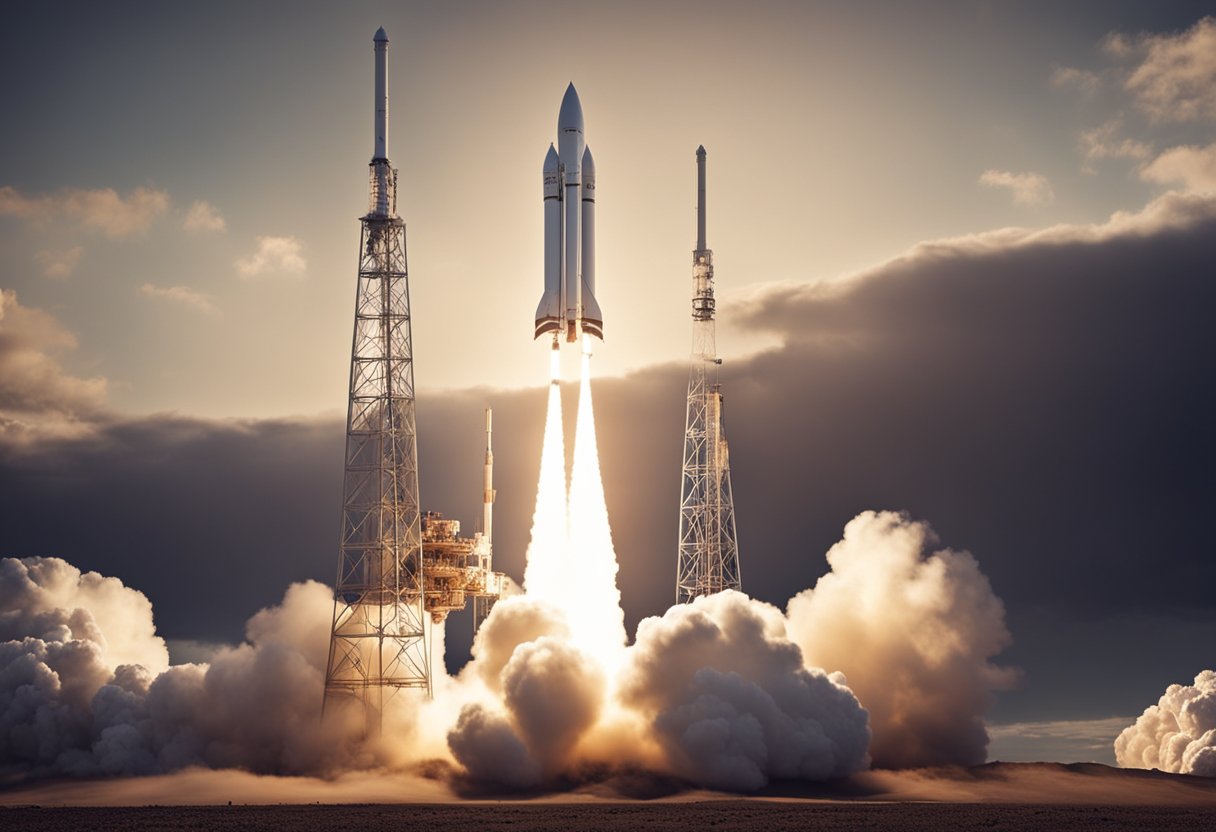
Our continuous exploration has a ripple effect on various sectors, from improved weather prediction and disaster management to advancements in geological sciences. It allows us to watch over and protect our planet by tracking hurricanes, mapping deforestation, and monitoring other environmental concerns. Furthermore, the technologies developed for space expeditions often find their way into other industries, transforming our daily lives on Earth. The unparalleled view of our planet’s interconnected systems that space exploration provides is central to forecasting changes and fostering sustainability for future generations.
Space exploration has unlocked a multitude of Earth science advancements, with each historical milestone paving the way for new discoveries. From the early days of the Space Race to the continuous human presence on the International Space Station, these landmarks have shaped our understanding of Space and Earth alike.
The competition between the Soviet Union and the United States during the Cold War era catalysed the period known as the Space Race. It was during this time that Yuri Gagarin became a household name as the first human to journey into outer space, marking a significant moment for the Soviet space programme. The Space Race reached its climax with the Apollo 11 mission, where the United States achieved the formidable task of landing astronauts on the Moon. These events not only demonstrated the capabilities of human ingenuity but also set the stage for future cooperative efforts in space exploration.
From unmanned satellites to crewed lunar landings, pioneering space missions have been instrumental in progressing Earth science. The launch of Sputnik 1 paved the way for our ventures into space and remains a cornerstone of human achievement. Likewise, the Apollo 11 mission stands as a testament to our tenacity, with the first Moon landing expanding our knowledge of lunar geology and Earth’s place in the solar system.
In the realm of space exploration, international collaboration has been exemplified by the creation and operation of the International Space Station (ISS). It is a joint effort involving NASA, the European Space Agency, and other international partners. The ISS has become a symbol of unity in space research and serves as a unique laboratory for long-duration microgravity research, which has profound implications for Earth science studies. This platform has also inspired future endeavours, such as those documented by SpaceVoyageVentures.com, highlighting the potential of space tourism and the ongoing development of accessible space travel for all.
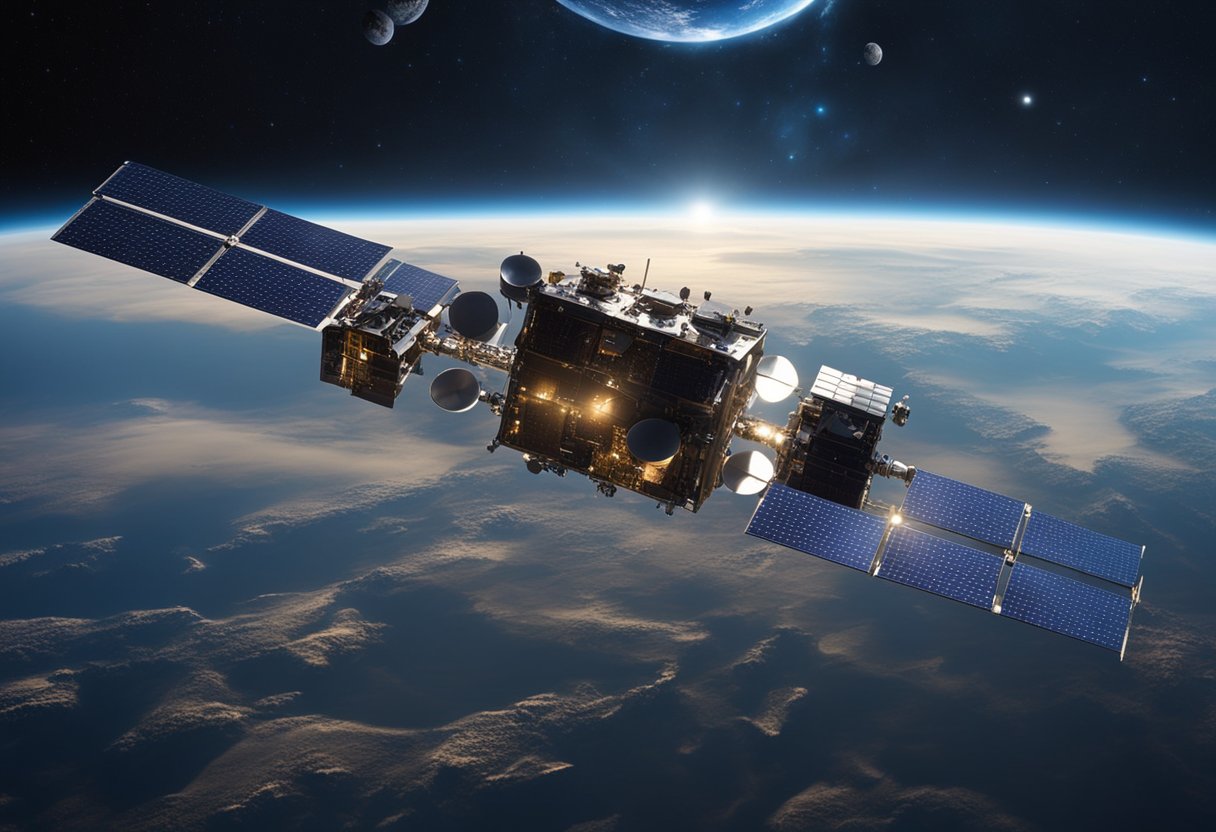
Space exploration has propelled the development of cutting-edge technologies in numerous sectors. Our focus here examines the significant strides made in rocketry, satellite systems, and robotic spacecraft, crucial to our quest beyond Earth.
Rocketry is the bedrock of our ability to reach space, and we’ve made leaps in this domain. Reusable rockets have revolutionised space travel, making it more cost-effective and frequent. Companies like SpaceX with their Falcon 9 and Falcon Heavy have led this charge, creating spacecraft capable of both delivering payloads into orbit and safely returning to Earth for multiple uses.
Satellite Technology has also benefited from advancements in rocketry. With miniaturized satellites, such as CubeSats, we can launch multiple devices in a single mission, reducing the cost and expanding our capabilities in communication, Earth observation, and navigation.
Our understanding of satellite systems underscores their impact on our daily lives. From advanced telecommunications to environmental monitoring, satellites play a pivotal role. For instance, the Global Positioning System (GPS) has transformed navigation, now an integral feature in smartphones, vehicles, and other personal devices.
Moreover, observations from Earth-monitoring satellites such as ESA’s Sentinel series provide invaluable data on climate, aid disaster response, and contribute to agriculture. These systems demonstrate the dual benefits of exploring space while directly impacting our well-being on Earth.
We have entrusted robotic spacecraft and probes with our most daring missions across the Solar System. The Cassini-Huygens mission broadened our understanding of Saturn and its moons, while NASA’s Dawn ventured into the asteroid belt, relaying key information about Ceres and Vesta.
Mars hosts a fleet of our robotic explorers; rovers like Curiosity and Perseverance have been instrumental in searching for signs of past life and preparing for future human missions. Robotic technologies continue to be the spearhead of our extraterrestrial endeavours, paving the way for eventual human presence.
Advancements in Earth science have empowered us with unprecedented capabilities to monitor our planet. Utilising a fleet of satellites, we are better equipped than ever to analyse and respond to environmental changes, and to harness the wealth of data streaming from our atmosphere, oceans, and land.
Our satellites, like the Landsat 9, play a pivotal role in studying climate change. They allow us to track atmospheric phenomena and measure the concentrations of greenhouse gases, providing invaluable insights into our changing climate. The Operational Land Imager and the Thermal Infrared Sensor on board the Landsat 9 provides us with continuous observations that are crucial for understanding the dynamics of climate change and taking informed actions.
Remote sensing technologies have significantly enhanced our disaster response capabilities. When calamities strike, Earth observation satellites provide rapid, accurate assessments of affected areas. This crucial information aids in efficient resource allocation and helps mitigate the impact of disasters. Real-time satellite imagery facilitates a quicker reaction when seconds count, strengthening our resilience to environmental emergencies.
Satellites like those deployed by the European Space Agency are imperative for monitoring the health of our oceans. This close observation helps us understand the intricate connections between the Earth’s atmosphere and its water bodies. By tracking changes in ocean temperatures and currents, we build a clearer picture of our environment and its underlying processes, aiding in the preservation and stewardship of these vital ecosystems.
Our commitment to Earth observation and environmental monitoring continues to grow alongside our understanding of the planet. With every new data point and image, we’re not just watching Earth from space; we’re safeguarding its future and ours.
Space exploration has provided us with a framework to better comprehend the geological processes of Earth by examining our planet in the context of our solar system’s diverse geological landscapes.
The observation of Mars has played a crucial role in enhancing our understanding of volcanic and sedimentary processes. Advanced rovers and landers have been able to study the Red Planet’s surface directly, providing data on the geological similarities and differences between Mars and Earth. The Martian polar ice caps, containing layers of dust and ice, are reminiscent of Earth’s own geological layers, offering clues about the planet’s climate history.
Titan, Saturn’s largest moon, with its thick atmosphere and surface lakes of methane and ethane, presents us with an analogue for early Earth’s geology, allowing us to investigate the processes that took place before life began here. By studying Titan’s complex organic chemistry and surface changes, we can make inferences about Earth’s geological and atmospheric evolution.
The collection and analysis of extraterrestrial materials, such as moon rocks and meteorites, have provided direct evidence of the geological history of the solar system and our own planet. Samples returned from the moon have allowed us to calibrate our planet’s geological clock by providing a definitive age for the lunar surface, and in turn, estimates for the ages of Earth’s oldest rocks.
The study of such materials has also afforded us the opportunity to understand Earth’s place in the solar system. The Venusian surface, with conditions extreme enough to melt lead, has been scrutinised through lander missions and orbiters. By comparing its geology to our own, we can explore the divergent paths that terrestrial planets can take, enhancing our knowledge of Earth’s geological past and potential future.
Observations from space missions enrich our geological models and enable us to appreciate Earth as a dynamic, ever-evolving planet within a wider celestial context.
In our exploration of the cosmos, significant astrophysical discoveries have illuminated our understanding of the universe. These findings range from unraveling the mysteries of distant worlds to observing the most enigmatic cosmic phenomena.
The quest to find planets beyond our solar system has been transformative. We’ve located a vast array of exoplanets using a variety of methods, including the transit technique, where a planet’s subtle shadow when passing in front of its star reveals its presence. Observatories like the Hubble Space Telescope have been instrumental in characterising these distant worlds, allowing us to analyse their atmospheres and, in some cases, even speculate on their potential to uphold life.
Our ventures into space have also exposed the remarkable behaviours of cosmic phenomena. The detection of black holes, those enigmatic regions of spacetime exhibiting gravitational effects so strong that nothing can escape, has advanced with new observational data. Techniques developed for these observations often come from flagship missions and ground-based observatories that probe the far reaches of our universe.
The Hubble Space Telescope has been a cornerstone in the field of astrophysics. Its high-resolution imagery of distant galaxies and stars has answered fundamental questions about the age and size of the universe. From confirmation of the accelerating expansion of the universe due to dark energy to the discovery of proto-galaxies that formed shortly after the Big Bang, Hubble’s contributions are foundational to our comprehension of the cosmos.
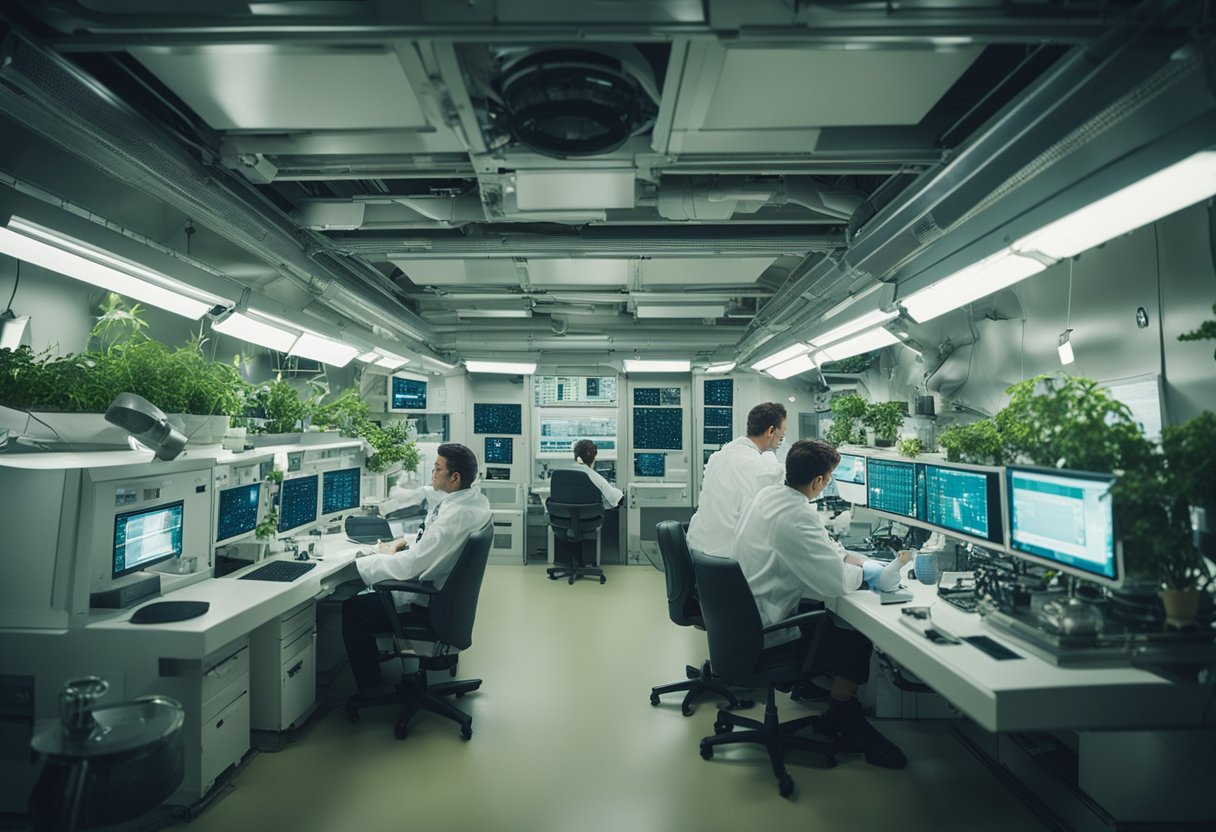
In our quest to understand the effects of space on human biology, we’ve made significant strides, particularly in the areas of human health research and the development of life support systems vital for space biology.
The space environment poses unique challenges to human health, including the absence of gravity, which affects muscle and bone density. Our dedicated research aboard the International Space Station has led to breakthroughs in understanding and mitigating these effects. For instance, studies on bone loss in space have informed not only strategies to help astronauts maintain their health but also treatments for osteoporosis here on Earth.
Prolonged exposure to microgravity conditions also offers us insight into the workings of the human cardiovascular system. On Earth, gravity’s pull on our body fluids means that our cardiovascular system works continuously against this force. In microgravity, this dynamic changes significantly, providing an invaluable perspective on cardiovascular health and potential novel treatment avenues.
Life support systems are crucial for providing a stable habitat in the space environment. They must meticulously recycle water and air to ensure a consistent supply of oxygen and removal of carbon dioxide. For extended missions, bioregenerative life support systems, which use biological processes to recycle resources, are being developed and tested. This includes the cultivation of plants not only for food but also to replenish oxygen levels, transforming carbon dioxide back into breathable air.
The challenges of growing plants in the absence of gravity also drive us to innovate in areas of space biology. This research has resulted in advances in our understanding of plant biology that are applicable to agriculture on Earth—leading to more efficient farming techniques and greater food security. Space biology experiments, like those conducted on the model organisms, are essential for understanding life’s adaptation to the extreme space environment and for designing systems that support life during space exploration.
Our understanding of how different forms of life adapt and thrive in these foreign conditions continues to expand, directly benefiting health and life support system technologies. As we prepare for future space tourism, outlined by sources such as SpaceVoyageVentures.com, the health and well-being of all space travellers remain at the forefront of our research.
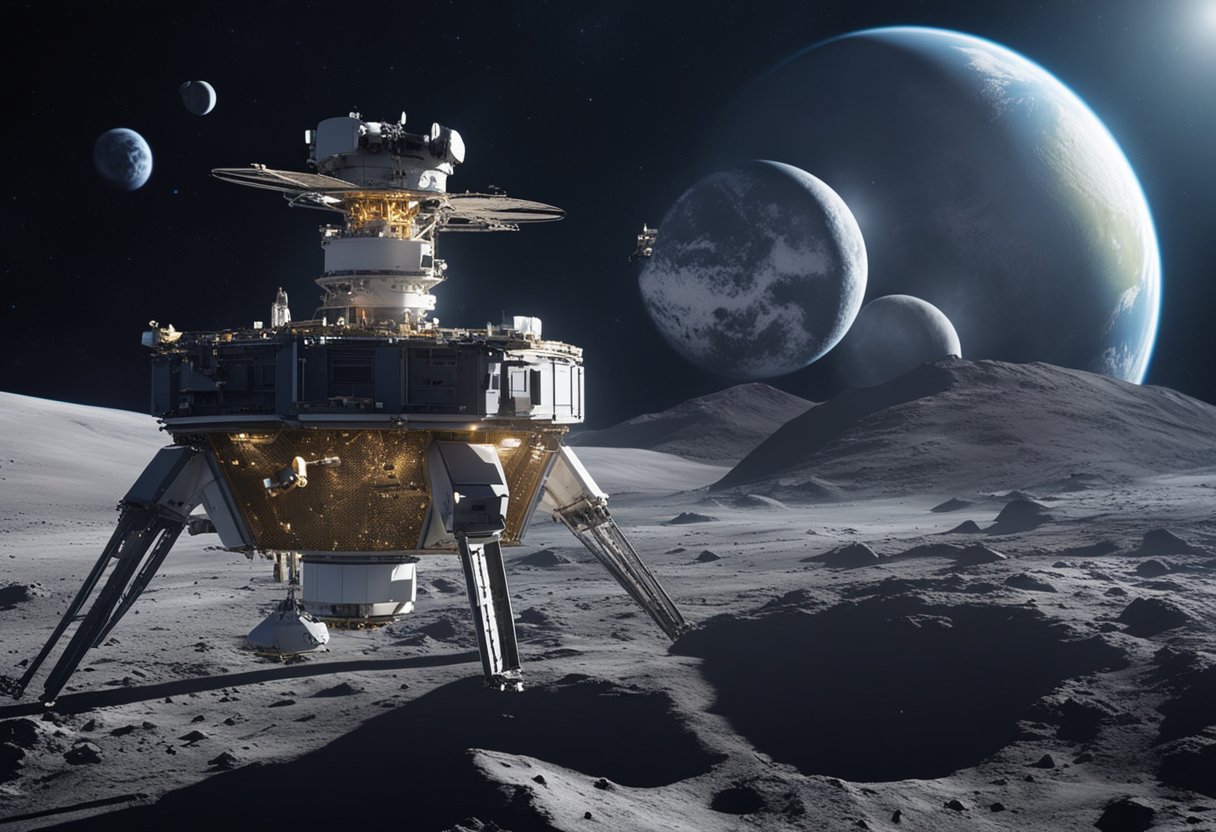
Space exploration has cascaded into economic prosperities that extend their influence back on Earth, shaping the telecommunications and navigation sectors, ushering in a new era of commercial spaceflight, and fostering a robust low-Earth orbit economy.
In the realm of telecommunications, advancements in space technology have been pivotal. We’ve seen a surge in the number of satellites in geostationary and other orbits that bolster global communication networks. These satellites enable high-speed internet access in remote locations, and power navigation systems that have become integral to modern life, supporting everything from daily commutes to complex logistics for commercial companies.
Commercial spaceflight is experiencing a renaissance, led by ambitious commercial companies who are not only reducing the costs with reusable rocket technology but are also creating novel opportunities for space tourism. Companies like SpaceVoyageVentures.com represent the frontier of the industry, offering insight into current and near-future space tourism experiences.
The low-Earth orbit economy is fast becoming a cornerstone of space industry, with an infrastructure that supports a myriad of activities from satellite deployment to scientific research. Commercial entities play an increasingly significant role, launching their own fleets of satellites, contributing to Earth’s digital infrastructure, and expanding the economy beyond our planet. The vibrant ecosystem in low-Earth orbit is proving fundamental to the continuous development of our off-world capabilities.
Our persistent curiosity has led us down a path of remarkable discovery in our quest to find extraterrestrial life. Through the lens of Earth sciences, we interpret our findings with the hope of uncovering beings beyond our own world.
On Titan, Saturn’s largest moon, expansive methane lakes hint at the possibility of chemical processes similar to those that support life on Earth. Meanwhile, Europa, one of Jupiter’s moons, is known for its subsurface ocean believed to harbour the conditions necessary for life. These extreme environments could be home to extremophiles, organisms that thrive in conditions once thought to be uninhabitable. Such findings inform our understanding of where life might exist beyond our planet.
Our space science endeavours, especially astrobiology missions and studies, play a pivotal role in seeking life. Spacecraft like the Mars rovers have been pivotal in life detection efforts, analysing soil and atmospheric samples for biosignatures. The data collected by these missions strengthen our proficiency in identifying life-supporting environments. Mars has been a focal point in this search, largely due to its past watery conditions and geological similarities to Earth.
In these pursuits, we remain hopeful yet rigorous in our investigations, leveraging every piece of knowledge gained to expand humankind’s understanding of life’s potential in the cosmos.

Advancements in space technology provide us with unparalleled tools for managing Earth’s natural resources and promoting environmental sustainability. By leveraging satellite data and innovative practices learnt from space exploration, we can effect change that benefits both our planet and its inhabitants.
We use high-resolution images from satellites to monitor and manage forestry, water bodies, and agricultural land. This enables us to detect illegal deforestation, track water resources for sustainable use, and optimise crop yields. The view from space also supports biodiversity conservation efforts, providing critical data to understand and protect ecosystems. For example, initiatives like how Space Exploration Can Teach Us to Preserve All Life on Earth highlights the impact of observations from orbit on global ecology and conservation strategies.
In pursuit of clean air and sustainable energy solutions, we look to space for inspiration. Technological breakthroughs such as the development of perovskite solar cells, which may soon revolutionise the way we harness solar energy, are direct outcomes of research conducted in microgravity environments. NASA’s work on Human Spaceflight Technologies Benefitting Earth includes leveraging in-space printing for these solar technology advancements. Additionally, the focus on hydrogen as a clean fuel option in space exploration has spinoffs that can lead to the adoption of hydrogen-based energy systems on Earth, supporting the drive towards cleaner air and reducing our reliance on fossil fuels.

In this section, we examine the continuous evolution of space exploration, from Mars colonisation to the geopolitical intricacies of astropolitics. We contemplate the hurdles that must be overcome and deliberate on the trajectories that future space missions might follow.
Mars has always captivated us as the next frontier for interplanetary colonisation. The prospects for sending cargo and crew to the Red Planet have seen tangible plans materialising, such as the promotion of future tourism trips at SpaceVoyageVentures.com. Nevertheless, establishing a sustainable presence on Mars presents an elaborate challenge, considering the need for self-sufficient habitats and life support systems.
Deep space missions, extending far beyond our lunar neighbour, place tremendous technical and physiological demands on explorers. Spacecraft integrity, cosmic radiation protection, and psychological well-being of astronauts are substantial challenges. Ensuring reliable communications and cargo resupply over astronomical distances adds layers of complexity to these missions.
As nations and private entities push the boundaries of exploration, policy and government involvement become crucial in regulating and fostering a collaborative environment. It is essential to establish comprehensive guidelines that balance ambition with space sustainability and equitable access. We are at the cusp of truly global deliberations on how to govern our celestial endeavans.
International coordination and transparent policies will pave the way for harmonious and beneficial exploration endeavours. With careful planning and adherence to international treaties, we can ensure that our strides into the cosmos are conducted responsibly for the advancement of all humankind.
As we explore the pivotal questions within Earth sciences, it becomes evident that the insights gained from space have significantly informed our understanding of the Earth.
Space exploration has been instrumental in Earth sciences, providing a unique vantage point to monitor climate patterns, natural disasters, and environmental changes. The vantage point of space allows us to study Earth in ways not possible from the ground.
Scientific breakthroughs from space missions include the discovery of the Van Allen radiation belts, detailed Earth mapping, tracking weather systems in real-time, and the identification of previously unknown geological features.
Satellite technology has revolutionised Earth science research by enabling continuous global observations of weather, vegetation, land use, and ocean currents. It also aids in the early detection of natural calamities, thus helping to mitigate their impact.
Information from space expeditions has yielded data critical in the understanding of phenomena such as the ozone hole, sea-level rise, and ice sheet dynamics. This data is pivotal for developing models to predict future climate trends.
Global Positioning System (GPS) technology, originally developed for space navigation, has become integral to navigation and timing services on Earth. Weather prediction models, enhanced by space-based data, are now essential for agriculture, transportation, and even personal planning.
Historical space exploration endeavours, such as the Apollo missions, have provided us with a comparative planetology perspective, enhancing our geologic understanding of Earth by studying lunar samples and fostering advancements in remote sensing technology.